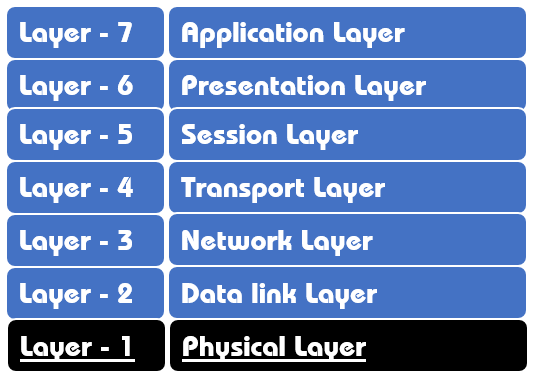Introduction
The first layer of the osi reference model is physical layer. This layer is responsible for the physical mechanics of a network connection.
This layer provides function and procedures required to transmit a bit stream over a physical medium. It deals with physical and technical specification of the interface and transmission medium. Such as wires, radio optical lights etc. It is responsible for the conversion of binary information into physical layer signal and vice versa. Hubs, switches, repeaters, modem are physical layer devices.

In a simpler way, it translates the information that receives from the data-link layer (layer 2) into electromagnetic signals (binary data) to send them over the physical medium (wired or wireless media).For example: if the cable uses fiber, the physical layer defines how 1s and 0s are represented using an LED or laser with different light frequencies.
The physical mechanics of a network connection includes the following.
- The type of interface used on the networking device.
- The type of cable used for connecting devices.
- The connectors used in each end of the cable.
- The pin patterns used for each of the connections on the cable.
- The encoding of a message on a signal by converting binary digits to a physical representation based on the media type.
Functions of physical layer
- Modulates the process of converting a signal from one form to another so that it can be physically transmitted over a communication channel.
- It performs Synchronization of bits.
- It helps in direction of data transfer.
- It provides an interface between physical device and transmission medium.
- This layer connects devices to the media in two ways: point to point and multipoint.
- Bit-by-bit delivery.
- Auto-negotiation and transmission mode control.
- Circuit switching and multiplexing hardware control of multiplexed digital signals


